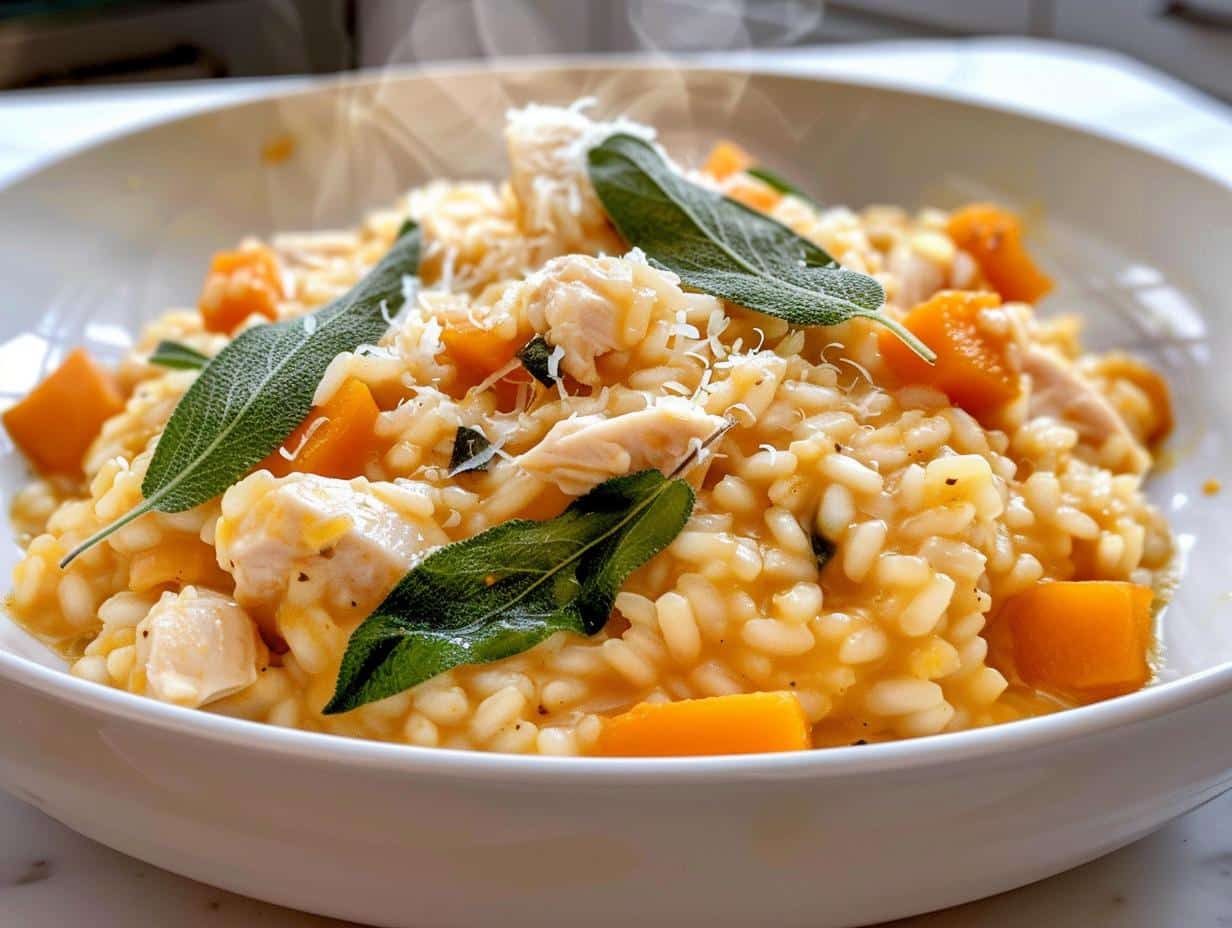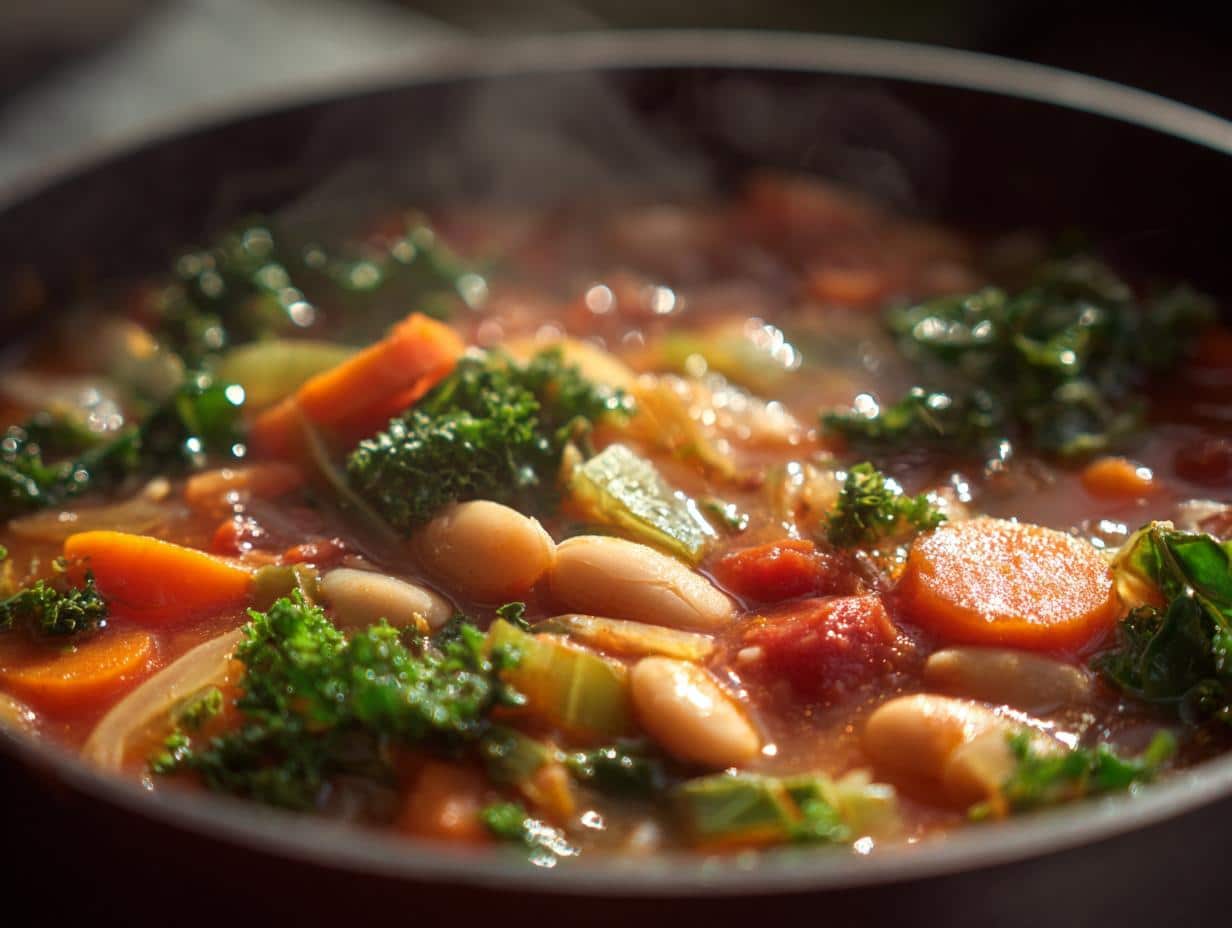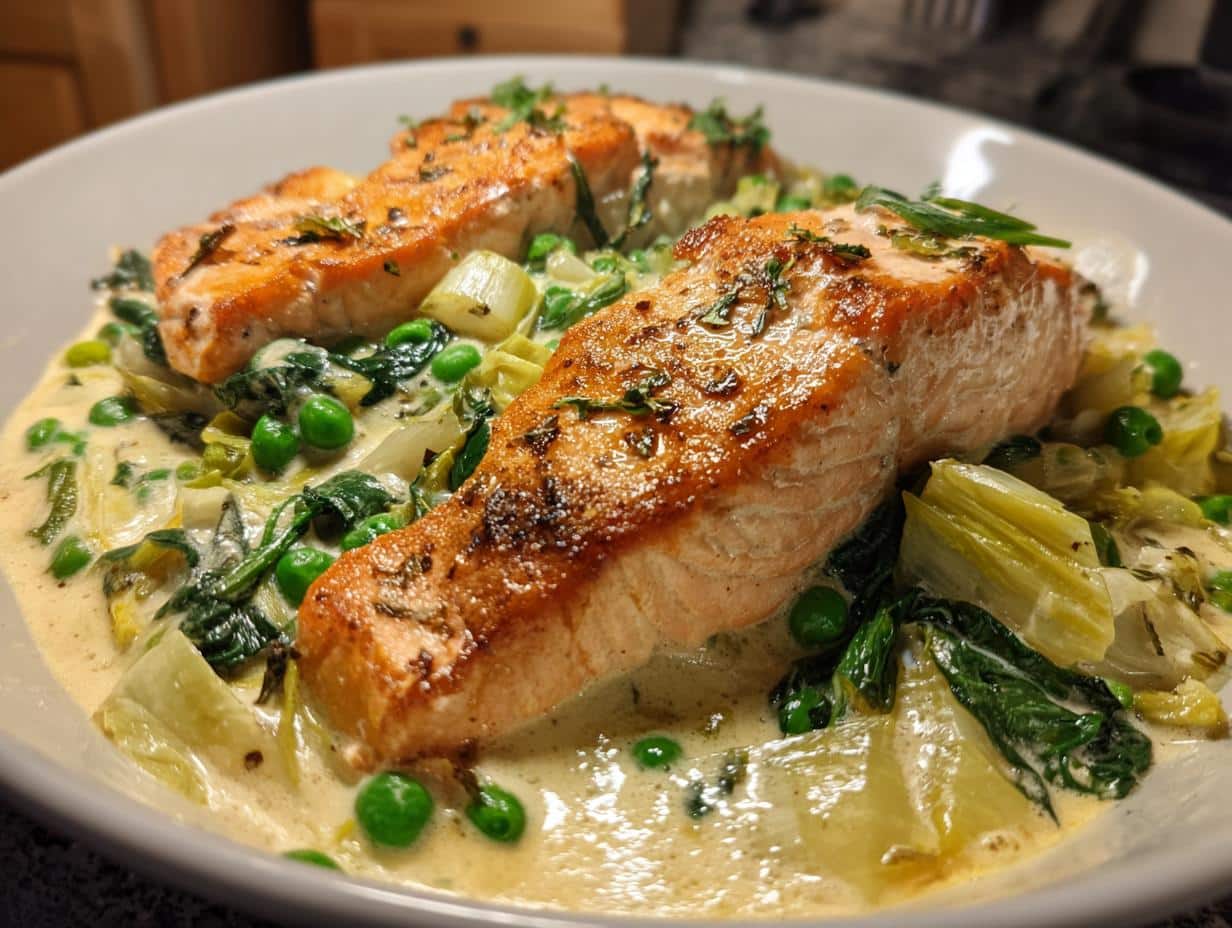There’s something magical about a steaming bowl of One-Pot Vegetable Minestrone with Winter Squash on a chilly evening; it’s like wrapping yourself in a warm, edible hug. I first fell in love with this recipe when I needed something hearty yet healthy after a long day of holiday shopping, and now it’s my go-to whenever the temperature drops.
What makes this minestrone special is how the winter squash melts into the broth, creating this rich, velvety base that’s packed with nutrients. And let’s be real, when you’re shivering and hungry, the last thing you want is to wash a mountain of dishes. That’s why I adore how everything comes together in one pot (hence the name!).
My version keeps things simple but delivers big flavor, think sweet squash, savory garlic, and just the right amount of oregano to make it sing. It’s the kind of meal that makes you feel nourished from the inside out, and trust me, your kitchen will smell absolutely incredible while it simmers.
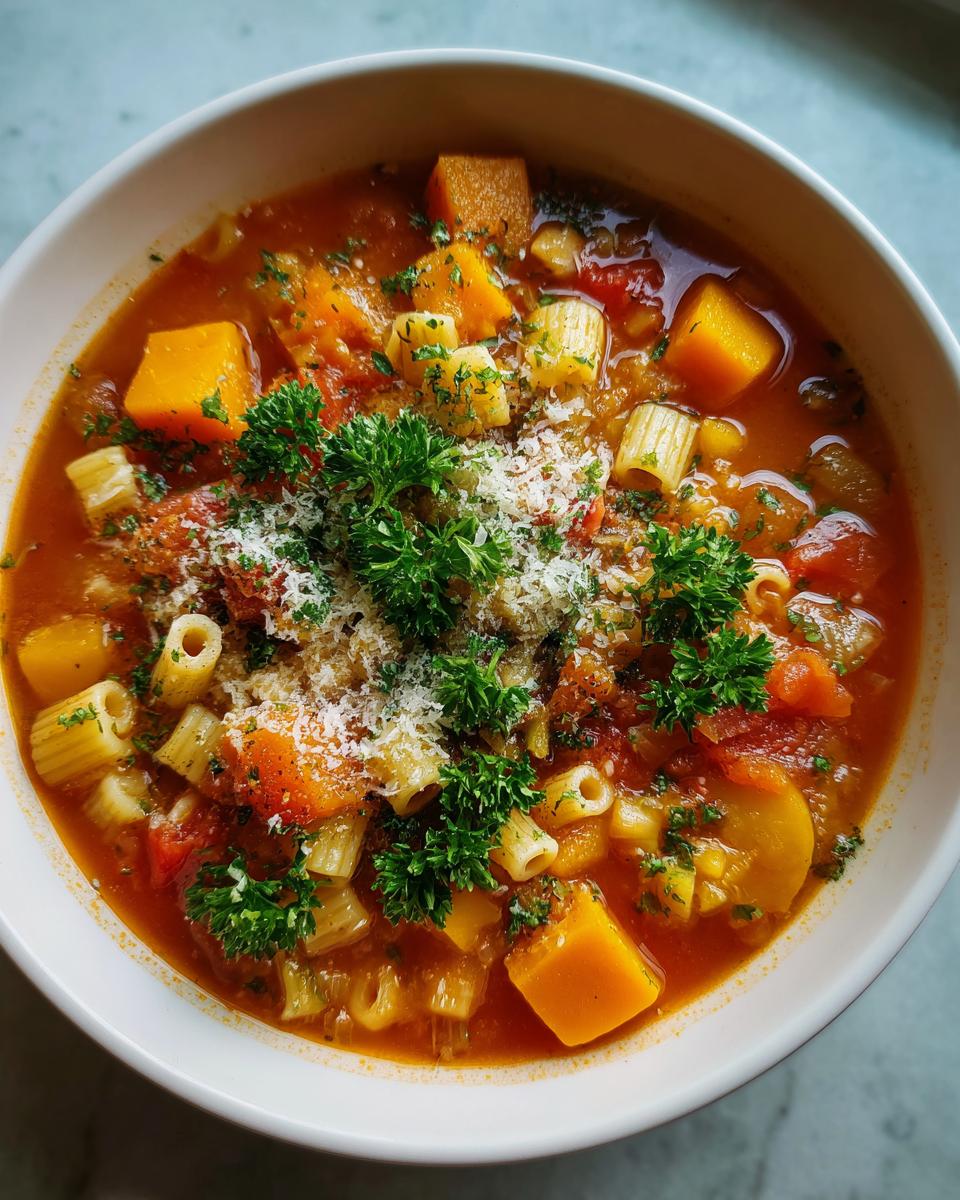
Why You’ll Love This One‑Pot Vegetable Minestrone with Winter Squash
Oh, where do I even start? This soup is basically a warm hug in a bowl, and I guarantee it’ll become a winter staple in your kitchen too. Here’s why:
- Nutrient-packed goodness: Winter squash is loaded with vitamins A and C, and when you add in all those other veggies, you’ve got a meal that’s as good for you as it is delicious. No guilt here, just pure, wholesome comfort.
- One-pot wonder: Less dishes = more happiness. From sautéing the veggies to simmering the broth, everything happens in one pot. Even the pasta cooks right in there! My kind of cleanup.
- Cozy, hearty flavors: The squash melts into the broth, making it silky and rich, while the oregano and garlic give it that classic minestrone warmth. It’s like your favorite sweater, but edible.
- Perfect for chilly nights: When it’s cold outside, this soup is your best friend. It fills you up without weighing you down, and the aroma alone will make your house smell like an Italian kitchen.
- Easy to customize: Don’t have exact ingredients? No problem. Toss in whatever veggies you’ve got, this soup is forgiving and flexible. (More on swaps later!)
Seriously, if you need a reason to make this tonight, think: warm, nourishing, and barely any cleanup. What’s not to love?
Ingredients for One-Pot Vegetable Minestrone with Winter Squash
Okay, let’s gather our cast of characters! One of the best things about this minestrone is how simple the ingredients are, nothing fancy, just good, honest flavors that work together beautifully. Here’s what you’ll need, broken down into handy groups:
For the Soup Base
- 1 tbsp olive oil, the foundation of all good soups! Extra virgin gives the best flavor.
- 1 onion, chopped. Any color works, but I love yellow onions for their balance of sweet and savory.
- 2 garlic cloves, minced, Fresh is best here, none of that jarred stuff!
- 2 cups winter squash, peeled and diced, Butternut, acorn, or kabocha all work wonders. About 1-inch cubes are perfect.
- 1 carrot, chopped. There’s no need to peel if it’s organic; just give it a good scrub.
- 1 celery stalk, chopped. Don’t skip this! It adds such great depth.
For the Broth and Seasonings
- 4 cups vegetable broth, Homemade if you’ve got it, but store-bought works too.
- 1 can (14.5 oz) diced tomatoes, with their juices, that liquid gold goes right into the pot!
- ½ cup small pasta, Ditalini is my favorite, but any small shape like elbows or orzo will do.
- 1 tsp dried oregano, Rub it between your fingers first to wake up the oils.
- ½ tsp salt. Start with this; you can always add more later.
- ¼ tsp black pepper, freshly cracked if possible.
For Garnish
- ¼ cup fresh parsley, chopped. That pop of green makes all the difference.
2 tbsp grated Parmesan cheese (optional), because everything’s better with cheese, right?
Equipment You’ll Need
Grab these trusty tools, nothing fancy required:
- Large pot, about 4-5 quarts, should do it.
- Sharp knife, for all that chopping.
- Cutting board, preferably one that doesn’t slide around.
See? Nothing too crazy here, just good, simple ingredients that come together to make something truly special. Now let’s get cooking!
How to Make One-Pot Vegetable Minestrone with Winter Squash
Alright, let’s get cooking! This is where that big pot of yours becomes a bubbling cauldron of deliciousness. Follow these steps, and you’ll have soup perfection in no time:
1. Sauté the Aromatics
Heat the olive oil in your large pot over medium heat. Add the chopped onion and minced garlic, ahhh, that sizzle is music to my ears! Stir occasionally for about 3 minutes until they’re softened and fragrant. Don’t let the garlic brown, though; burnt garlic is nobody’s friend.
2. Cook the Veggies
Now toss in your diced winter squash, chopped carrot, and celery. Give everything a good stir to coat with that lovely onion-garlic mixture. Let these cook for about 5 minutes, stirring now and then. You’ll notice the edges of the squash starting to soften, that’s exactly what we want!
3. Build the Broth
Time for the liquid gold! Pour in your vegetable broth and that whole can of diced tomatoes (juice and all). Crank up the heat to bring it all to a gentle boil, and you’ll see little bubbles dancing around the edges of the pot. This is when your kitchen starts smelling absolutely heavenly.
4. Add the Final Touches
Stir in the pasta, oregano, salt, and pepper. Now reduce the heat to a simmer, we’re talking gentle bubbles here, not a rolling boil. Set your timer for 15 minutes. This is when the magic happens as all those flavors get to know each other.

5. The Final Check
After 15 minutes, test a piece of pasta; it should be al dente, with just a slight bite to it. The squash should be tender enough to easily pierce with a fork but not mushy. If it needs another minute or two, go ahead, but don’t walk away! Overcooked pasta in soup turns into sad little blobs.
6. Serve It Up!
Ladle that gorgeous minestrone into bowls and garnish with fresh parsley and a sprinkle of Parmesan if you’re feeling fancy. Grab some crusty bread, and dig in while it’s piping hot!
Tips for Perfect One-Pot Vegetable Minestrone with Winter Squash
Here are my secret tricks to take your minestrone from good to “oh my goodness, can I have seconds?”:
- Bay leaf bonus: Toss in a dried bay leaf with the broth; it adds this subtle depth that makes people go “What is that amazing flavor?” Just remember to fish it out before serving!
- Salt savvy: Start with less salt than you think you need, especially if using store-bought broth. You can always add more at the end, but you can’t take it out!
- Pasta perfection: If you’re making this ahead, consider cooking the pasta separately and adding it just before serving. Leftover soup with pasta tends to absorb all the broth overnight.
- Veggie variations: Got some wilting greens in the fridge? Spinach, kale, or chard make fabulous last-minute additions, just stir them in during the final 2 minutes of cooking.
- Flavor booster: A splash of balsamic vinegar or a squeeze of lemon juice at the end brightens up all the flavors beautifully.
See? Making incredible minestrone isn’t hard; it’s just about paying attention to those little details that make all the difference. Now go forth and soup!
Ingredient Substitutions and Notes
Listen, I get it, sometimes you’re staring at your fridge thinking, “I don’t have exactly what this recipe calls for.” No worries! This minestrone is wonderfully forgiving. Here are all my favorite swaps and notes to make it work with what you’ve got:
Squash Swaps
The winter squash is the star here, but which kind? Honestly, they’re all delicious:
- Butternut squash, My go-to because it’s easy to find and peels like a dream
- Acorn squash, Sweeter and darker, with gorgeous orange flesh
- Kabocha, If you can find it, this Japanese squash has the creamiest texture
- Pumpkin, Yes, the edible kind! Just make sure it’s not the carving variety
No fresh squash? A 12-oz bag of frozen cubed butternut works in a pinch, no need to thaw!
Pasta Possibilities
The pasta shape matters less than you’d think:
- Gluten-free? Any small GF pasta works; I like brown rice ditalini. For more gluten-free options, check out these recipes.
- No ditalini? Try small shells, elbows, or even broken spaghetti pieces
- Want more protein? Stir in cooked lentils or white beans instead of pasta
Broth Basics
Vegetable broth is ideal, but:
- Chicken broth adds a richer flavor if you’re not strictly vegetarian
- Better Than Bouillon paste mixed with water is my emergency backup
- Water works too! Just add an extra pinch of salt and maybe a bay leaf
Other Handy Swaps
- No fresh parsley? A teaspoon of dried works, or try fresh basil if you’ve got it
- Out of oregano? Italian seasoning blend or a pinch of thyme makes a fine substitute
- Tomato alternatives: Use crushed tomatoes if that’s what you have, or even tomato sauce in a pinch
The moral of the story? Don’t let missing one ingredient stop you from making this cozy soup. Some of my best versions came from “clean out the fridge” improvisations!
Serving Suggestions for One-Pot Vegetable Minestrone with Winter Squash
Oh, the joy of ladling out this gorgeous minestrone into waiting bowls! But let’s talk about how to turn it from a simple soup into a full-on feast. Trust me, these little touches make all the difference between “dinner” and “dinner with a capital D.”
First up, bread is non-negotiable in my house. A crusty baguette or ciabatta is perfect for sopping up every last drop of that savory broth. If you’re feeling fancy, rub a toasted slice with garlic and drizzle with olive oil. Absolute heaven! My uncle once ate three bowls just because I served it with homemade focaccia, true story.
For something lighter, pair your minestrone with a simple side salad. My go-to is mixed greens with lemon vinaigrette; the bright acidity cuts through the soup’s richness beautifully. If it’s particularly chilly out, try roasted Brussels sprouts or garlicky sautéed kale instead.
Now, about that Parmesan garnish, don’t skip it! A generous sprinkle right before serving adds this salty, umami punch that ties everything together. For extra fun, put out a small bowl of grated cheese and let everyone help themselves. (Confession: I may or may not have been caught eating Parmesan straight from the grater while “testing” the soup.)
Here are a few more of my favorite ways to serve this minestrone:
- Soup flight: Serve smaller portions in espresso cups as a starter at dinner parties; guests always rave!
- Lunchbox special: Pack in a thermos with a slice of crusty bread wrapped separately, perfect for work or school.
- Soup bar: Set out toppings like red pepper flakes, extra parsley, or even crispy roasted chickpeas for a DIY experience.
Remember, the best meals aren’t just about the food, they’re about the experience. So light some candles, put on some Italian music, and pretend you’re in a cozy trattoria as you enjoy your masterpiece. Mangia!
Storage and Reheating Instructions
Okay, let’s talk leftovers, because this minestrone might just taste even better the next day! (If you can resist eating it all in one sitting, that is.) Here’s how to keep it tasting fresh and fabulous:
Storing Your Minestrone
First rule of soup club: cool it completely before storing. I usually let mine sit on the counter for about 30 minutes, just until it’s no longer steaming. Then transfer it to airtight containers or mason jars (my personal favorite for portion control).
- Fridge life: It’ll keep beautifully for 3-4 days. The flavors actually deepen overnight, and that squash gets even sweeter!
- Pasta pro tip: If you know you’ll have leftovers, consider cooking the pasta separately and adding it to each portion as you reheat. This prevents it from turning mushy in the fridge.
- Freezing? Absolutely! Just leave out the pasta (it gets grainy when frozen). Portion into freezer bags, lay flat to freeze, and it’ll keep for 2-3 months. Thaw overnight in the fridge before reheating.
Reheating Like a Pro
When you’re ready to enjoy again, here’s how to bring it back to life:
- Stovetop method: My favorite! Pour into a pot and warm over medium-low heat, stirring occasionally. Add a splash of broth or water if it’s thickened too much.
- Microwave hack: Transfer to a microwave-safe bowl, cover loosely, and heat in 1-minute bursts, stirring between each. Stop when it’s just heated through, no boiling needed!
- Pasta addition: If you stored without pasta, cook some fresh pasta and stir it into the reheated soup. Or toss in some crusty bread for a quick “stoup” (soup + stew hybrid!).
One last secret: brighten it up before serving! A fresh squeeze of lemon juice or a dash of vinegar wakes up all those flavors beautifully. And don’t forget to re-garnish with parsley, it makes even day-old soup feel special.
Nutritional Information
Let’s be real, when soup tastes this good, it’s easy to assume it can’t possibly be good for you, too. But surprise! This One-Pot Vegetable Minestrone with Winter Squash is actually packed with nutrients that’ll make your body sing. Here’s the scoop per generous bowl (about 1¼ cups):
- Calories: Around 220, perfect for a light lunch or hearty starter
- Fat: Just 5g (mostly from that glorious olive oil)
- Protein: 6g, not bad for a veggie soup!
- Carbs: 38g, hello, energy boost
- Fiber: 5g, thanks to all those chunky veggies
- Sugar: 6g (all natural from the squash and tomatoes)
But wait, there’s more! Each serving delivers:
- 150% of your daily Vitamin A (hello, gorgeous skin!)
- 20% of your Vitamin C needs
- Good doses of potassium, calcium, and iron, too
Important note: These numbers can vary based on your exact ingredients, especially the broth and cheese. Using low-sodium broth? The sodium content drops. Skip the Parmesan? That’ll trim the fat. Homemade broth instead of store-bought? Your nutritional profile might look different. The beauty is you can tweak it to fit your needs!
What really matters is that you’re getting a bowl full of real, wholesome ingredients that nourish you from the inside out. Now that’s what I call comfort food with benefits!
Frequently Asked Questions
I’ve gotten so many great questions about this minestrone over the years. Here are the ones that pop up most often (along with my tried-and-true answers!):
Can I freeze this soup?
Absolutely! Just remember two things: First, leave out the pasta; it gets mushy when frozen. Cook it fresh when you’re ready to serve. Second, let the soup cool completely before transferring to freezer bags or containers. It’ll keep beautifully for 2-3 months. Pro tip: freeze in portion-sized containers so you can grab just what you need!
What squash works best in this recipe?
Honestly, they’re all delicious! Butternut is my go-to because it’s easy to peel and dice, but acorn squash adds a lovely sweetness. Kabocha has the creamiest texture if you can find it. Even pumpkin works (just not the carving kind!). The key is to cut whatever you use into 1-inch cubes so they cook evenly.
My soup thickened too much overnight. What should I do?
No worries, this happens when the pasta absorbs the broth! Just add a splash of water or extra vegetable broth when reheating. Start with ¼ cup and adjust until it’s the consistency you like. Bonus: This is why I sometimes cook the pasta separately if I know we’ll have leftovers.
Can I make this in a slow cooker?
You bet! Sauté the onions, garlic, and veggies first (this step really boosts flavor), then transfer everything except the pasta to your slow cooker. Cook on low for 6-7 hours or high for 3-4. Add the pasta in the last 30 minutes so it doesn’t overcook. Easy peasy!
Is there a way to make this soup creamier?
A couple of tricks: Blend about a cup of the cooked soup and stir it back in for a richer texture. Or, stir in a tablespoon of cream or coconut milk at the end. My Italian grandma would gasp, but sometimes I add a spoonful of ricotta to my bowl, so indulgent!
Still have questions? Drop them in the comments. I love helping troubleshoot and hearing how your versions turn out!
Nothing makes me happier than hearing how this minestrone turns out in your kitchen! Did you add an extra pinch of oregano? Maybe swap in some kale from your garden? I want to hear all about it, the triumphs, the tasty accidents, even the “oops” moments (we’ve all had them!).
Here’s how you can join our cozy little soup club:
- Snap a pic of your masterpiece and tag me on Instagram, I live for those steamy bowl shots with golden Parmesan sprinkles!
- Leave a rating below. Did it earn 5 squash stars? Your feedback helps other home cooks know what to expect.
- Share your tweaks in the comments; maybe you discovered the perfect bean addition or an unexpected spice that rocked your world. Your idea might inspire someone else’s new favorite version!
This recipe has become such a labor of love for me, and seeing how you make it your own is the absolute best part. Last winter, a reader told me she served it at her book club with rosemary focaccia, and now I do the same! Another added crispy pancetta on top, genius, right?
So go ahead, ladle, garnish, and share away. Let’s keep this pot of comfort bubbling all season long!
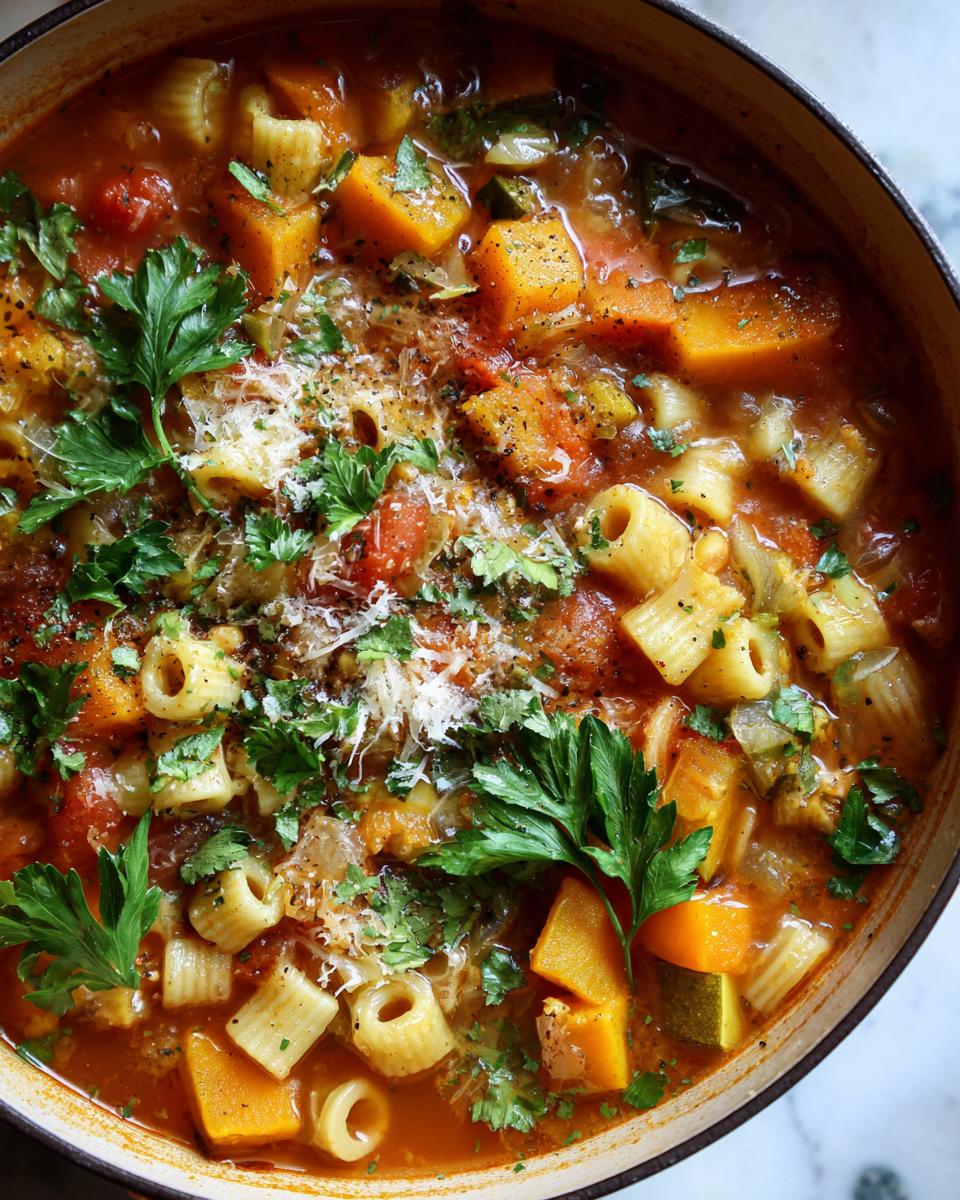
For more delicious recipes and cooking inspiration, check out Recipesloop.

One-Pot Vegetable Minestrone with Winter Squash
Ingredients
Equipment
Method
- Heat olive oil in a large pot over medium heat. Add onion and garlic, sauté until softened, about 3 minutes.
- Add winter squash, carrot, and celery. Cook for 5 minutes, stirring occasionally.
- Pour in vegetable broth and diced tomatoes. Bring to a boil.
- Stir in pasta, oregano, salt, and pepper. Reduce heat and simmer for 15 minutes or until pasta is tender.
- Ladle into bowls and garnish with fresh parsley and Parmesan cheese if desired.
Notes


